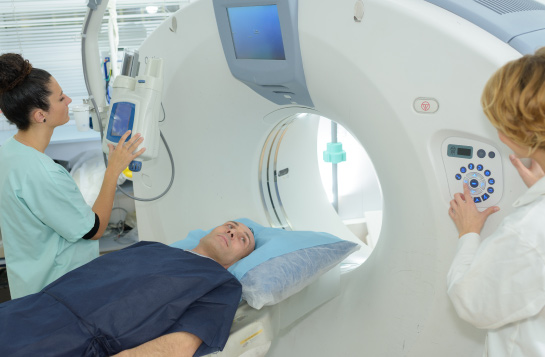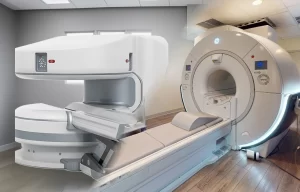MRI imaging is teeming with diverse options, each presenting a unique set of expectations and realities. Those who have undergone an MRI know well the discomfort it can entail, particularly in traditional closed-bore machines, where patients find themselves confined within a cylinder-like structure throughout the scan, with only a microphone-enabled communication with the technologist for solace. Alas, this claustrophobic setting can be distressing for some, especially young children or individuals with a high BMI, necessitating a parent’s presence during the procedure to offer protection and reassurance.
However, welcome respite comes in the form of the True Open MRI, where patients are emancipated from the constraints of narrow spaces and allowed the freedom of movement, thus granting them a more relaxed and comfortable experience. The promise of higher-quality MRI images and superior health outcomes further augments this newfound comfort. Indeed, the fusion of technological advancements with patient-centric care heralds a new era in medical imaging.
Closed MRI – Factors to Consider
However, in the quest for the ideal MRI machine, considerations of paramount importance demand contemplation, with patients’ comfort levels reigning supreme. Closed-bore MRI machines, while capable of producing high-quality images, may inflict feelings of claustrophobia on specific patients, particularly those who are obese or possess a stocky build, struggling within the confines of the machine’s narrow bore.
Furthermore, time constraints loom large in the selection process, as full scans on closed MRI machines demand minutes, leaving little room for movement within the confined space, often leading to obstructed images and necessitating repeat scans. Moreover, the limited interior dimensions of closed MRI machines may preclude the accommodation of larger patients, presenting a significant limitation.
Magnetic Field Strength – A Crucial Factor
Another factor to consider when evaluating an MRI machine is the strength of its magnetic field. as higher-powered magnet fields proffer more detailed images, offering unparalleled diagnostic insights. However, it comes to light that open-bore machines may render lower-quality images than their closed-bore counterparts, necessitating prudent consideration before making a decision.
Open MRI – Liberating Patient Experience
Open MRI systems boast many benefits, such as alleviating claustrophobia and panic attacks through their unconfined design and fostering an environment of freedom and movement for patients. Moreover, they are advantageous in accommodating patients with diverse physical abilities, ensuring a more inclusive and considerate imaging experience. Young patients, in particular, stand to gain significantly, as the presence of a parent during the procedure can offer immeasurable comfort and support.
Semi-Open MRI – Bridging the Gap
Semi-open MRI machines bridge the gap between open and closed systems, bestowing patients more space to breathe during the scan, making it a favorable choice for those battling claustrophobia. Moreover, the presence of parents alongside their children during the scan eases restlessness, providing a sense of familiarity and security during the process.
Functional Open MRI – Tailored Solutions
Functional open MRI systems find their niche in specific medical conditions, offering unique advantages like imaging joints in various positions without general anesthesia, expediting diagnoses, and facilitating swift treatment decisions. Their utility extends to diagnosing various injuries that may impede recovery, rendering them a preferred choice for patients grappling with pain or back issues.
Low-Resolution Open MRI – Trade-Offs to Consider
While praiseworthy for its comfort, low-resolution open MRI falls short in image quality compared to its closed counterpart. The weaker magnetic field leads to lengthier image acquisition times, culminating in less detailed images, potentially resulting in misdiagnoses or erroneous treatments. Prudent discussions with healthcare providers are vital to identify the most suitable scan type for each patient’s unique needs.
Feasibility – Challenges and Benefits
Feasibility emerges as a formidable challenge, with the high upfront cost of open MRI machines posing obstacles to widespread adoption. Despite their indisputable benefits, medical systems grapple with budgetary constraints, further exacerbated by the global pandemic. However, investing in high-performance MRI scanners, skilled operators, and necessary maintenance is crucial to unlock the full potential of open MRI systems.
Safety – Prioritizing Patient Well-being
Safety remains a paramount concern, particularly in the open MRI realm, where patients relish comfort and reduced claustrophobia, but not without potential risks. Magnetic fields inherent in MRI machines create powerful static fields, posing dangers if large ferromagnetic objects are inadvertently brought into the vicinity. Comprehensive safety training is imperative to prevent mishaps and ensure patients’ well-being.
Informed Decision-Making – Empowering Patients
In the grand tapestry of medical imaging, the myriad options and considerations pave the way for patient-centric care and unparalleled diagnostic accuracy. Each MRI system has unique attributes and limitations, offering a spectrum of possibilities to cater to diverse patient needs and medical requirements. Engaging in open dialogues with healthcare providers enables patients to make informed decisions, transforming the MRI experience into comfort, safety, and accuracy.




